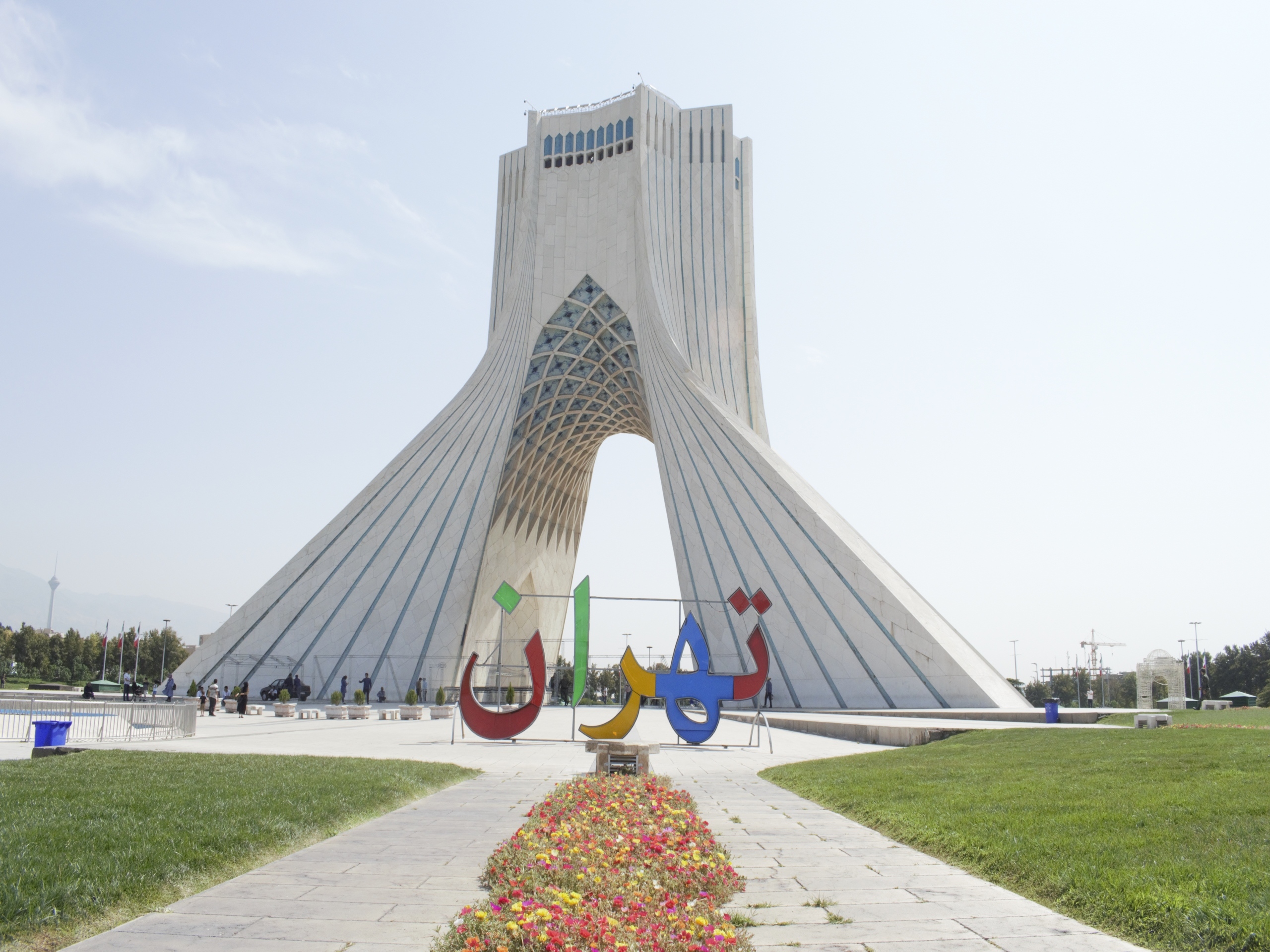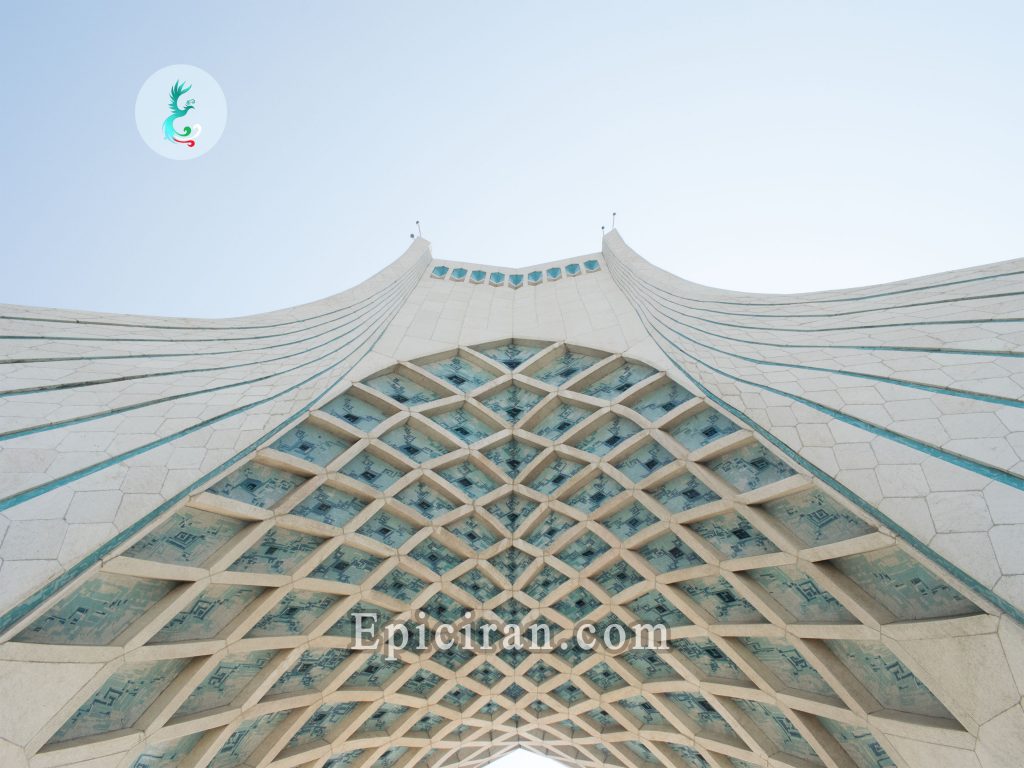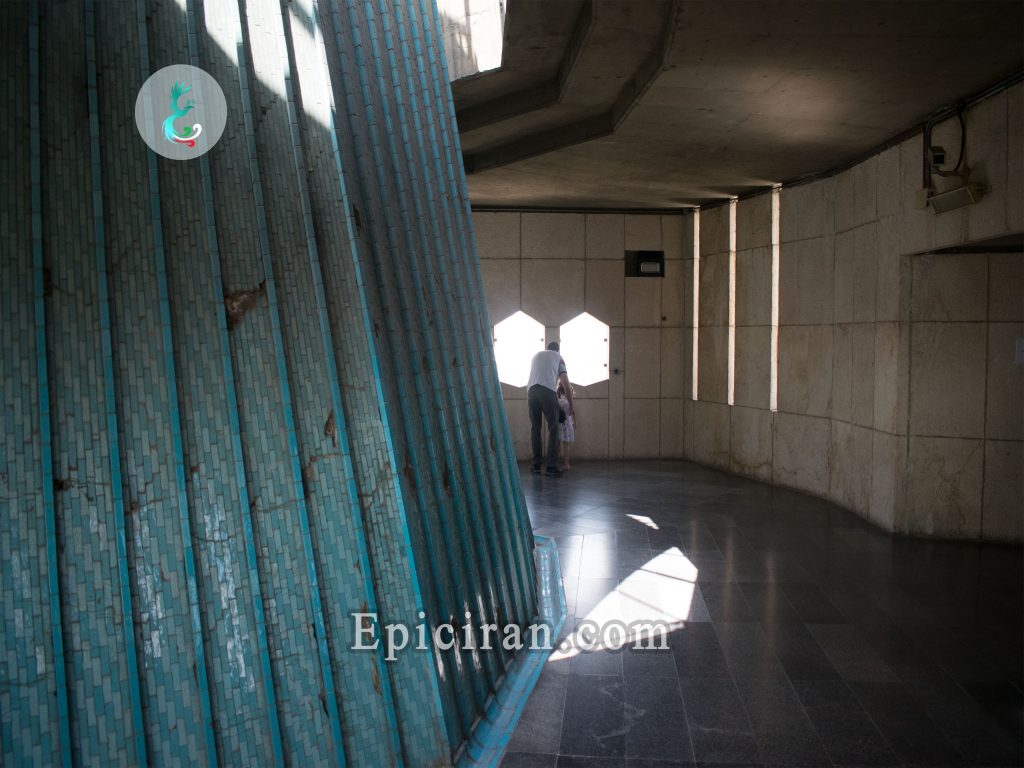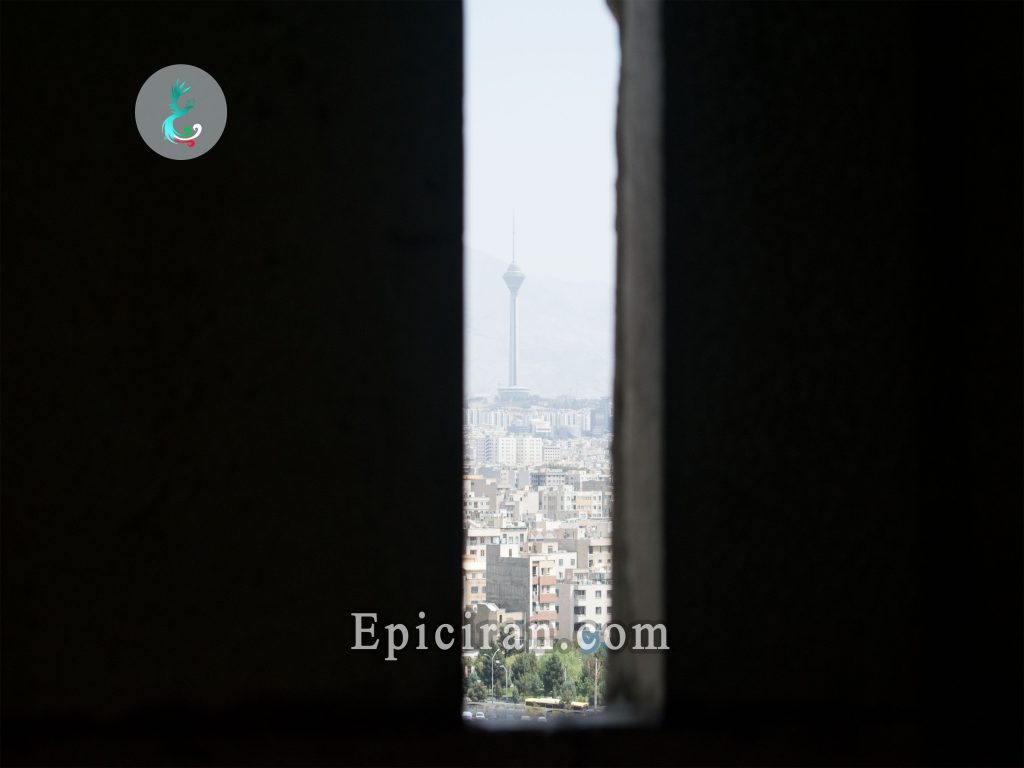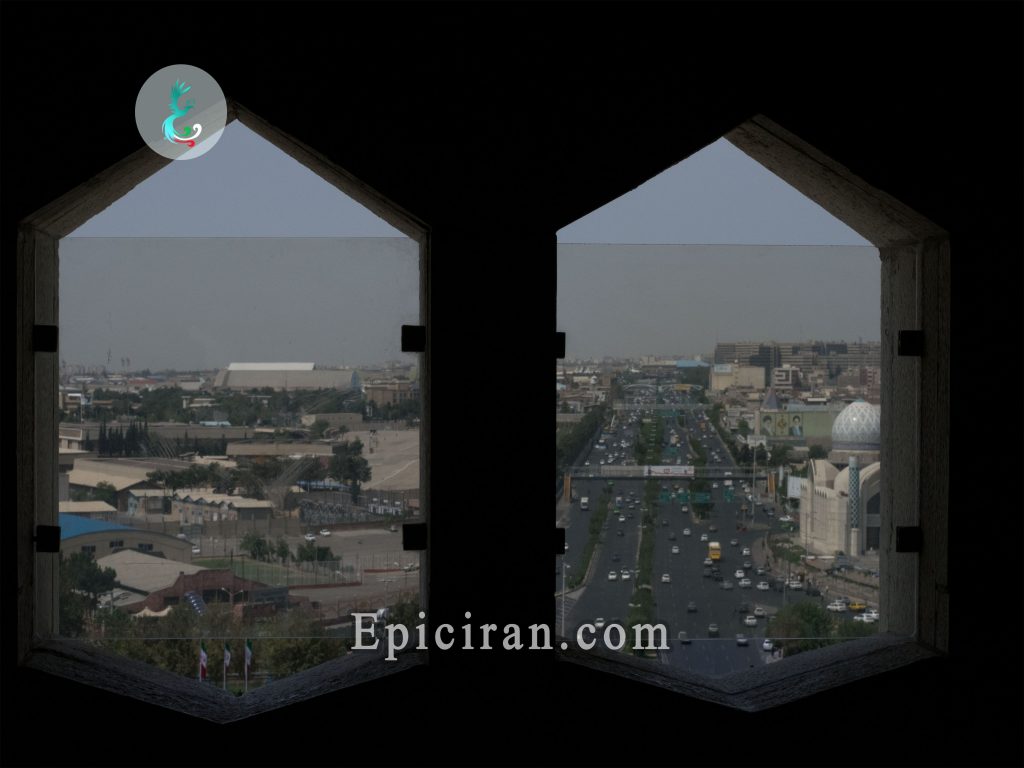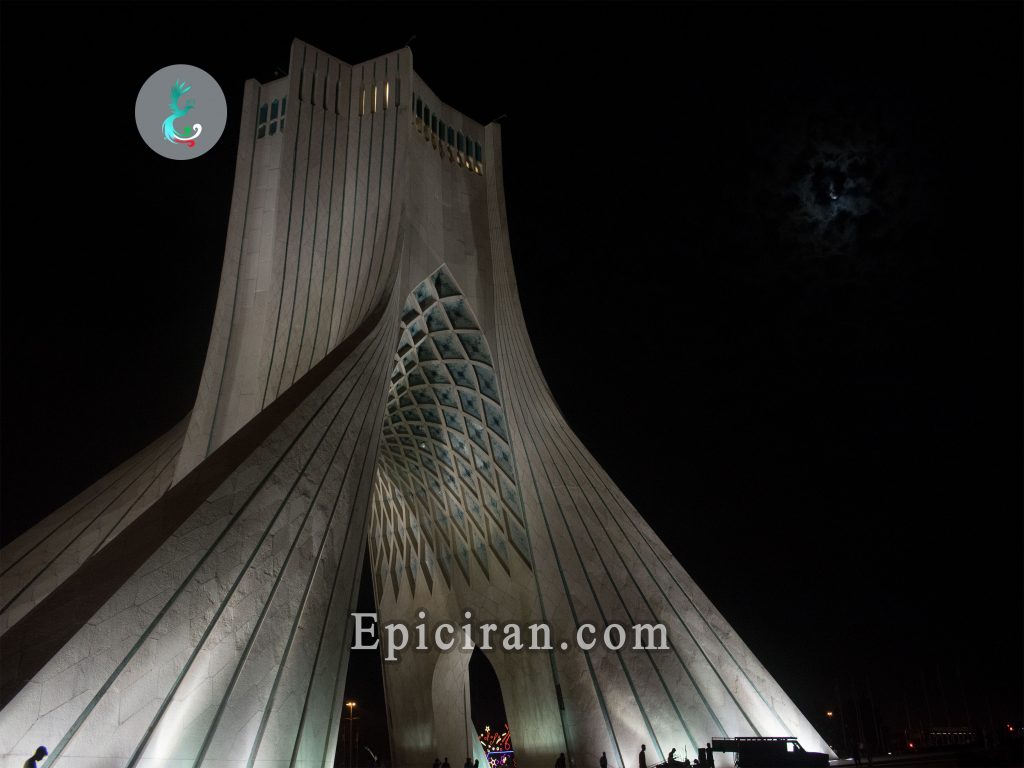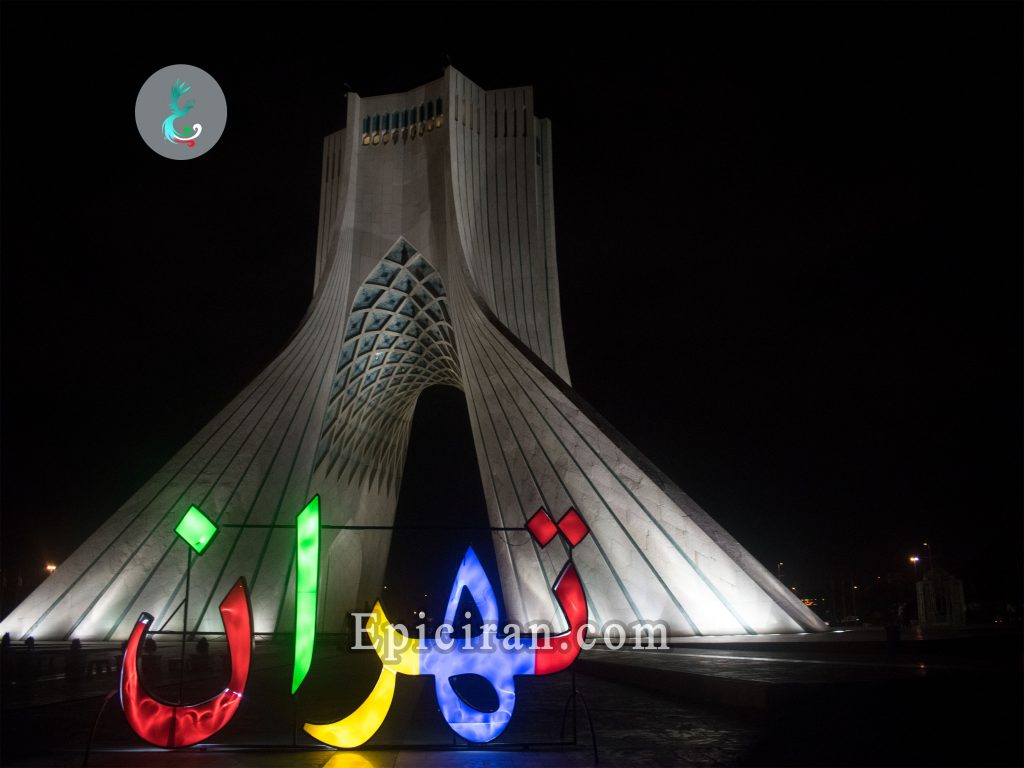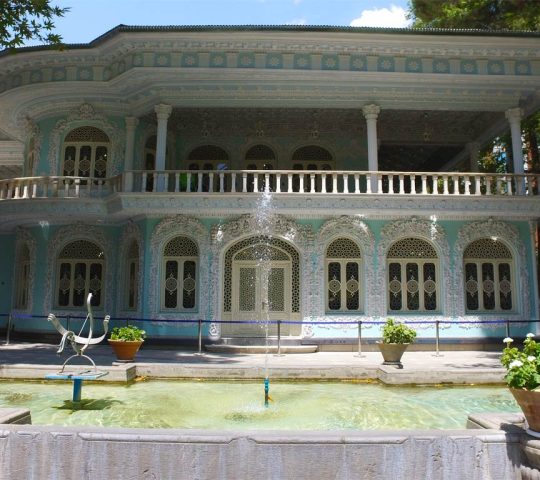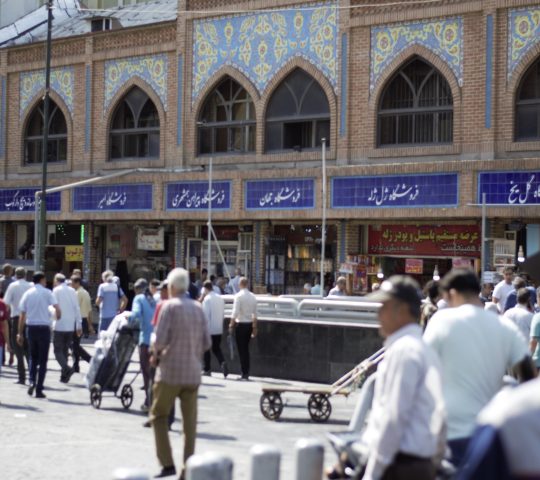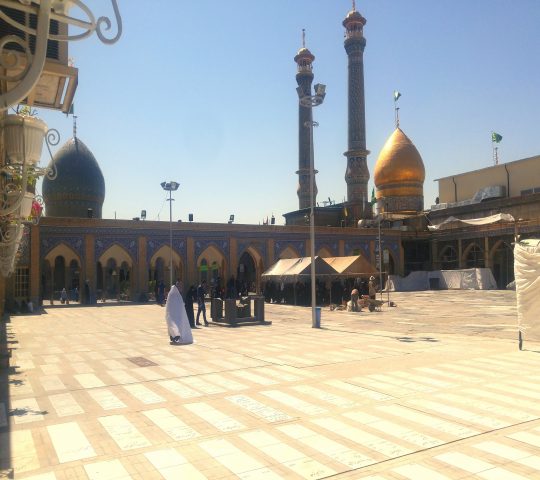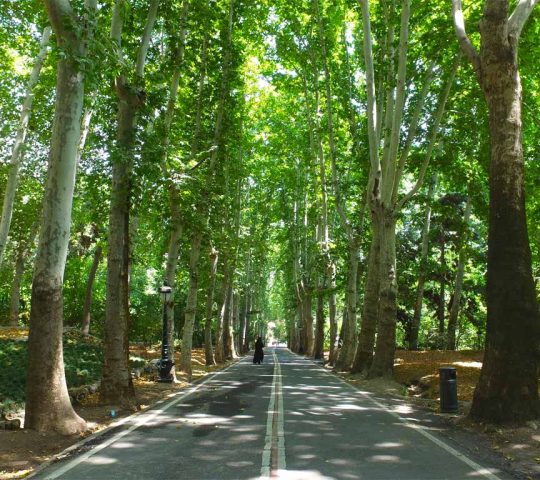In 1966, a competition was held between Iranian architects to build a national symbol in Tehran, where a young Iranian architect named Hossein Amanat won the competition and was responsible for construct a building on the Shahyad Square which was the symbol of modern Iran, was Azadi Tower.
Five years later, the construction of the 45-meter building was completed and for the first time, Cyrus Cylinder unveiled at the opening ceremony. After the victory of the Islamic Revolution in 1979, the tower was renamed the Azadi Tower or Freedom Tower.
At present, the Tower is one of several symbols of Tehran (alongside Milad Tower). The architecture of the Tower is inspired by three historical eras of Iran; Islamic, Sasanian, and Achaemenid eras. In the lower part of the monument, there is the Azadi Museum.

